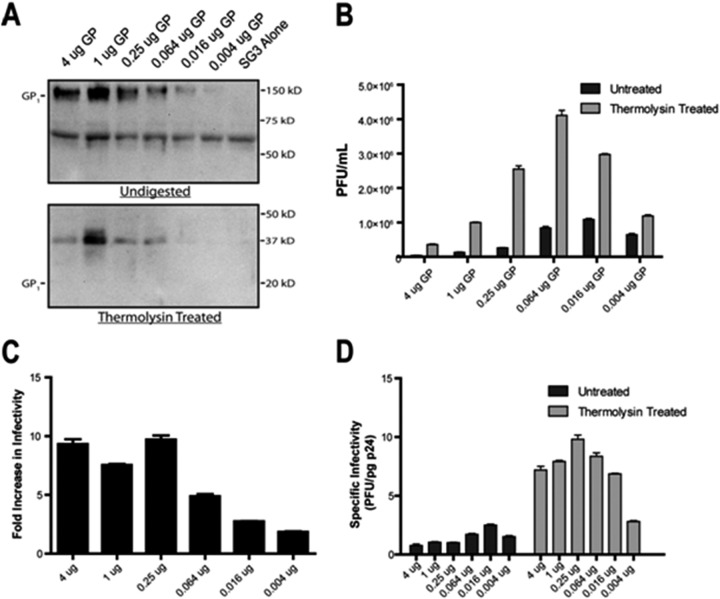FIG 7.
Proteolysis of high-GP1,2-containing pseudoviruses enhances infectivity. (A) Thermolysin digestion of GP1,2. Released pseudoviruses were treated for 5 min at 37°C with 0.5 mg/ml thermolysin. Reactions were then terminated with protease inhibitor cocktail, and samples were analyzed by Western blotting using polyclonal rabbit anti-EBOV antiserum. Untreated pseudoviruses were also analyzed as a control. (B) Thermolysin-treated pseudoviruses were normalized for p24 content and then titrated on JC53 cells by luciferase assay, followed by conversion to PFU/ml as described in Materials and Methods. Treated viruses were titrated alongside untreated viruses as a control. Results reported are representative of those obtained from three separate experiments and are the means and standard deviations for samples run in triplicate. (C) The fold increase in infectivity of pseudoviruses with thermolysin treatment was calculated from the data reported in panel B and plotted versus amounts of transfected GP1,2 DNA. (D) Specific infectivity of untreated versus thermolysin-treated pseudoviruses. Based on results reported in panel B and supernatant p24 ELISA (data not shown), specific infectivity, defined as PFU/pg p24, was calculated for untreated versus thermolysin-treated pseudoviruses and plotted versus amounts of transfected GP1,2 DNA.

